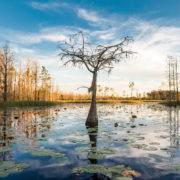Water Data and Science Committee Meeting Summary: April 20th, 2023
Link to recording: https://youtu.be/4O1uf8dh0PM
- Call to Order: Chair Amy Shallcross, Delaware River Basin Commission
Introductions of participants on the call — Abby Ebach, Adam Hobson, Amy Shallcross, Andrew Stephenson, Becca Emery, Beth Brown, Beth Callaway, Edward Swaim, Erin Spry, Faith Sternlieb, Jen Verleger, Julie Cunningham, Kirsten Wallace, Kristin Kaipust,
Luigi Romolo, Rachel Hogan Carr, Renee Bourassa, Rob Shedd, Robby Short, Tom Littlepage, Chris McCann, John Paczkowski, Kate Schmidt, Mel Fegler, Todd Stonely, Wei Han.
- Guest presentation
Topic:
Effective Communication of Complex Science: NWS and the Advanced Hydrologic Prediction Service
Speakers:
Robert Shedd, Service Coordination Hydrologist, National Weather Service (NOAA)
Rachel Hogan Carr, Director, Nurture Nature Center
Rob — the NWS Forecast Center’s jurisdiction (???). Mission is to strike a balance between science and communication. For most of NWS history, the emphasis has been on the science and not well focused on the communication aspect. NWS forecasts are complex and bring in information from a larger number of sources. Making sense of this data is key. Science communication challenges are how to communicate the science and uncertainty? Providing a consistent message across the agency and reaching as broad an audience as possible.
Rachel — Nurture Nature Center has been studying NWS forecast uncertainty. Since 2012 they’ve been helping NWS learn from professional water users, residential users, flood risk community residents, and others to understand how to improve forecast messaging more effectively. The first study looked at the NWS probabilistic flood forecast tool. NNC helped make color adjustments and changes to the text to improve graphs and summarize possible outcomes. The second study looked at sharing deterministic and probabilistic forecasts at the same time and particularly when they diverged. The study was expanded geographically. Key takeaways are that probability information can be tremendously helpful but more isn’t always better, so how should this be handled? Text based explanations of graphical products are important. Additionally, it can help to broaden audiences. Next steps are to integrate into the National Weather Prediction Center and broader rollout for standardization in NWS forecast centers.
- Committee discussion
Amy provided a preview of remote snow sensing, atmospheric rivers are upcoming topics for the committee. Becca Emery with Kisters indicated that they’re working on ways to conduct non-contact radar to measure flows and may have some contacts to present on the safe measurement and discharge. Adam Hobson with In-Situ also has connections with USGS NGWOS and others in this regard; they’re seeing a lot of demand for water quality forecasting particularly for recreation and drinking water supplies. Discussion at the Roundtable brought up artificial intelligence for the water resources sector, with a possible overlap on water quality, which could be another topic for the committee.
Beth gave an FYI to committee: FPS federal survey results https://pubs.usgs.gov/of/2023/1032/ofr20231032.pdf. Ideas to bring together how the federal government has worked with state agencies. Amy to reach out to Mindi and invite case study from Iowa.
- Next steps
Amy will ask the committee for further feedback on future topics.
- Next meeting: May 18th @ 1pmMT/3pmET

